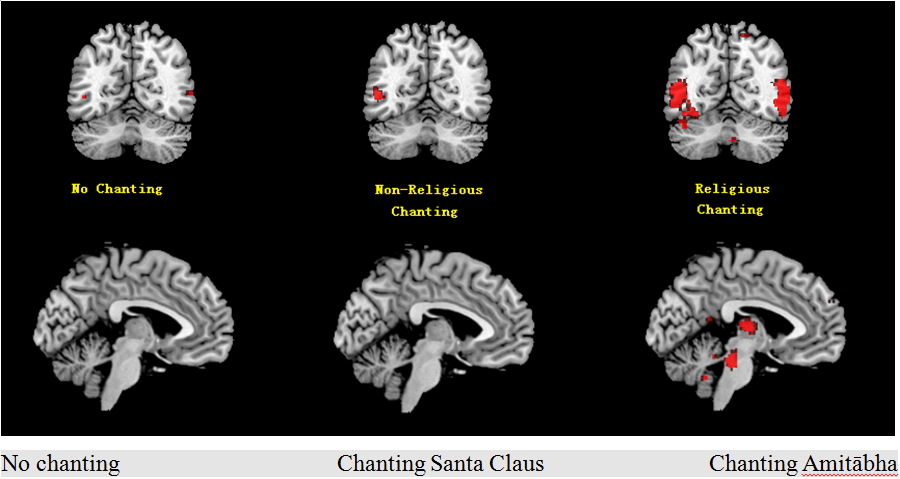Religious chanting/praying is widely practiced to cope with negative or stressful emotions, while the neural mechanism is far from clear. Our previous event-related potential (ERP) study showed that religious chanting significantly reduced the late-positive potential induced by negative events. However, the regulatory role of subcortical brain regions, especially the amygdala, in this process remains unclear. This fMRI study aimed to investigate the brain mechanism underlying the effectiveness of religious chanting in emotion regulation.
Methodology: Twenty-one participants were recruited into the fMRI study. The participants were asked to view neutral/fearful pictures while practice religious chanting (The name of Buddha Amitābha), non-religious chanting (the name of Santa Claus), or no-chanting, following a similar 2 x 3 factorial design. A 3.0 T Philips MRI scanner was used to collect the data and SPM12 was used to analyze the imaging data. Region of interest (ROI) analysis was carried to further investigate the activity of the amygdalae.
Results: We observed increased brain activity among participants who chanted Amitābha while viewing fearful pictures, in the following brain regions: the fusiform gyrus; left parietal lobule; prefrontal cortex; and especially subcortical regions including the amygdala, thalamus and midbrain. Importantly, obvious activity was noted in the left amygdala, but not the right, during religious chanting. Such activity was not observed in the two control conditions. ROI analysis on the activity of the left amygdala indicated a strong correlation during pure religious chanting and during religious chanting while viewing fearful pictures.
Conclusion: Religious chanting of Amitābha induced subcortical activation when people viewed negative events but not when the events were neutral. The asymmetric activity of the amygdala may play an important role in emotion regulation during religious chanting. Together with our previous ERP study, converging evidence demonstrates that religious chanting can affect the late stage of affective regulation. This influence probably occurs through cognitive reappraisal strategies. The role of left amygdala in fearful emotion regulation during religious chanting deserves further research.
本研究的主要內容是用神經科學的方法研究管理壓力和糾正情緒的傳統方法,其有效和相關神經機制。具體是用神經影像學方法(MRI,ERP)研究心念訓練能否有效改變情緒刺激的腦反應。
前期的功能磁共振顯示心念訓練能改變被試對恐懼圖片的腦反應。其中重要的是發現垂直杏仁體對改變刺激的可能的調節作用。這一發現可能對目前情緒調節的分類(抑制,轉移,認知在評估)補充作用。心念訓練可能是一種轉變之前情緒調節的一種新的方法。它的作用機理包括從不斷的情緒反應部位(杏仁體)直接改變。對外界的刺激的反應,尤其是對以上刺激的腦反應。
如果本項目的研究能夠最後證明心念訓練對深色杏仁體的特殊作用,這將在情緒調節乃至抑鬱症的治療中有的更好的應用場景。
